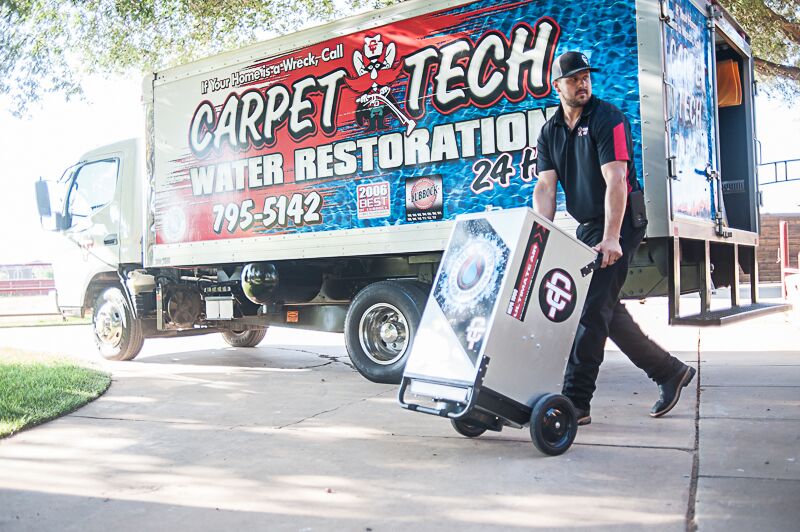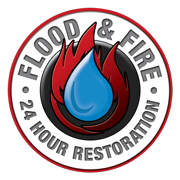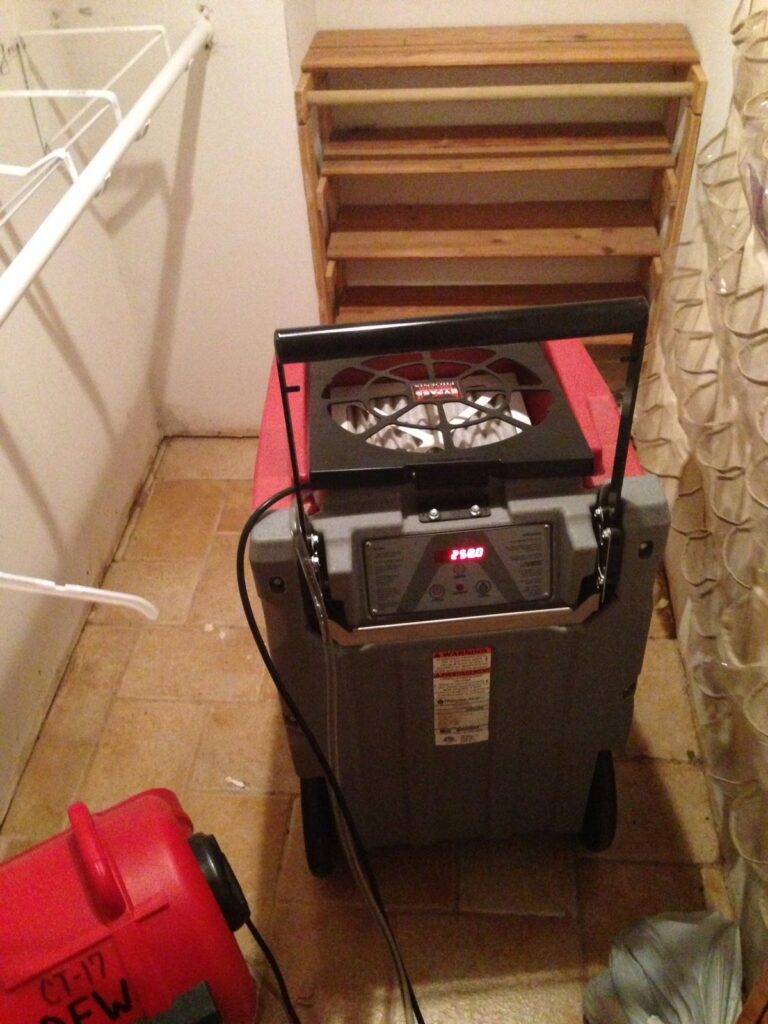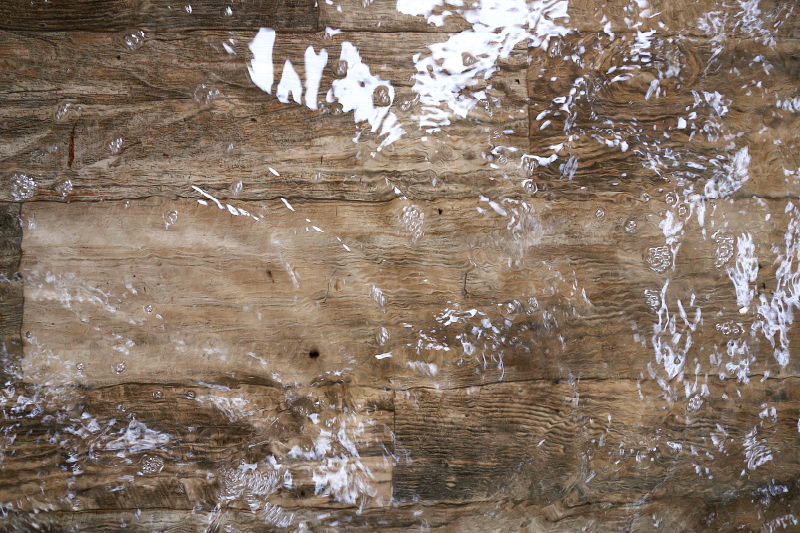
Every winter, homeowners face a common fear – freezing temperatures. Often, the battle isn’t just against the cold, icy wind outside. Instead, one of the biggest risks is inside the walls of our homes. That risk is a burst pipe. A burst pipe leaves extensive damage in its wake, from waterlogged furniture to damaged floors, not to mention escalated utility bills. This reality leaves many of us wondering why pipes burst in the winter and how to prevent it. If this question keeps you awake during the cold winter nights, this post can serve as your guide, giving you a clearer understanding of what causes this winter phenomenon and preparing you to combat this seasonal issue.
You need an expert to lead your fight against burst pipes and the resultant water damage. At Carpet Tech, we are one of the most recognized emergency flood restoration services in West Texas, Dallas-Fort Worth Area, Eastern New Mexico, and surrounding regions.
Having successfully handled a wide range of restoration challenges for numerous clients, Carpet Tech understands that dealing with water damage is a daunting experience. Whether your issue arises from a natural disaster, an unfortunate plumbing leak, or a destructive burst pipe in the heart of a cold, windy night, our experts are equipped and ready to respond around the clock.
Our commitment goes beyond just providing prompt service. We prioritize quality restoration service, backed by uncompromised reliability, offering you the peace of mind that every homeowner deserves.
Understanding the Cause
Getting to the root of why pipes burst in the winter requires a basic understanding of the phenomenon that unfolds within your pipes when temperatures outside plunge below 32 degrees Fahrenheit. As the temperature drops, the water inside your pipes starts to freeze. This frozen water expands as it turns into ice, putting pressure on the pipes from the inside. If this process happens in vulnerable pipes, such as those found in exterior walls or an unheated crawl space, the risk of a burst escalates dramatically.
Water molecules, like people, prefer comfort. At a temperate conditions, they move freely, maintaining a consistent flow and pressure inside the pipe in their liquid form. But just as extreme cold weather can induce discomfort in us, water molecules react similarly. When faced with freezing temperatures, they slow down, crystalize, and eventually form a blockage inside the pipe. This ice blockage creates a pressure pile-up between the blockage and the closed faucet. When the pressure exceeds the ability of the pipe to contain it, the weakest portion of the water pipe gives way, leading to a burst.
Not all the pipes in your home are at an equal risk of freezing. Pipes exposed to intensely cold areas, such as those located in exterior walls, outside faucets, and in unheated areas like basements, attics, and crawl spaces, are much more susceptible to freezing. Furthermore, the type of pipe can also play a part. While plastic pipes have a degree of flexibility, metal pipes are more rigid and prone to bursting under pressure.
During the cold winter, our homes’ heating systems come into full play, keeping us cozy and warm. However, often, the heat doesn’t reach some areas of your home, such as those mentioned above. This leaves these areas and the pipes running through them vulnerable to the freezing outside temperatures.
In understanding these fundamentals, homeowners can become empowered in preventing a pipe burst and the ensuing water damage, especially in the icy grip of the winter weather. Reducing the chance of problems in your home’s plumbing is a comprehensive process. It includes taking actions that address every potential issue or weak point in the plumbing system.
 Preventive Measures and Solutions
Preventive Measures and Solutions
Having uncovered why pipes burst in winter, it’s essential to take steps to prevent it from occurring. Protecting your home from a burst pipe doesn’t mean you need to redesign your plumbing or relocate your home to a warmer climate. On the contrary, simple, proactive measures can significantly reduce the risk of waking up to a flooded living room on a cold winter morning.
Starting with insulation, pipes placed in unheated spaces such as crawl spaces, attics, and near outside walls should be wrapped with insulation products like foam rubber or fiberglass sleeves. Pipe insulation can be a cost-effective solution to prevent heat loss and protect your pipes from cold air. Whether your pipes are plastic or metal, the extra layer can maintain a stable temperature inside the pipe, thereby reducing the chances of freezing.
Another effective measure is the use of heat tape. Electrical heating cables, or heat tape, can be wrapped around pipes to create an external source of heat that prevents freezing. It’s important to ensure that any flammable materials are kept away from heat tapes to avoid any fire hazard.
Consider leaving your kitchen cabinets and bathroom vanity doors open during extremely cold periods of freezing weather. This may sound unconventional, but it allows the warm air circulating in your home to reach pipes under the sinks and walls, keeping them warmer than the outside temperature.
If you believe a pipe has already frozen, don’t panic. You can apply slow heat to the frozen pipe by using an electric heating pad or a hair dryer. Remember, never use an open flame device as it may damage the pipe and create a fire risk.
In the unfortunate event that a pipe bursts despite your preventive measures, learning to manage the crisis efficiently can reduce damage. First, quickly shut off the main water supply using the shut-off valve. This stops the water flow and reduces further flooding. Contact a professional plumber to repair the broken pipe. Most importantly, call your restoration services immediately to mitigate water damage before it escalates to mold growth or major structural damage.
Dealing with Water Damage and Restoration
Despite the best of our efforts, Mother Nature sometimes manages to emerge victorious, leaving us coping with the aftermath of a burst pipe and resulting water damage. Here’s where we, Carpet Tech, step in with our expertise and commitment, guiding you through the process of restoration and recovery, one step at a time.
Our restoration process swings into action as soon as you make a distress call. Our expert team is dispatched immediately, reaching your location as quickly as possible to curtail further damage and start the recovery process. Our immediate response begins with an initial assessment of the extent of the water damage; this is where our experience comes to the forefront, allowing us to swiftly draw up and implement a strategic restoration plan keenly tailored to your home or business’s specific needs.
Recognizing the financial burden that can arise from such an unexpected incident, we ensure to coordinate directly with your insurance company. This active involvement helps align the restoration process with your specific coverage, reducing out-of-pocket costs and eliminating the paperwork hassle usually accompanying insurance claims.
 The first physical step of restoration involves water extraction. Utilizing our state-of-the-art, truck-mounted water extraction equipment, we promptly siphon off any standing water, thereby preventing further structural damage and potential mold growth.
The first physical step of restoration involves water extraction. Utilizing our state-of-the-art, truck-mounted water extraction equipment, we promptly siphon off any standing water, thereby preventing further structural damage and potential mold growth.
Once the water has been extracted, drying and dehumidification processes come into play. Using industrial-grade fans and dehumidifiers, we ensure your premises are entirely dried out, safeguarding your home against humidity-related issues and potential mold proliferation.
If there is any mold growth, our mold remediation experts conscientiously handle mold removal to ensure your home remains safe and healthy for habitation.
As comprehensive restoration experts, we undertake any necessary repairs, replacing damaged drywall, hardwood floors, or any other building materials, and restoring your home to its pre-damaged state.
Once all the restoration work is complete, we conduct a final walkthrough alongside you, ensuring that every concern has been meticulously addressed and that your home stands just as before the unfortunate event. And our support does not end with the completion of the job. As our relationship with our clients is enduring, we remain available for any follow-up or additional assistance you may need.
Rest assured, with Carpet Tech by your side, you’ll never be alone in such crises.
 Get Ready For Winter with Confidence
Get Ready For Winter with Confidence
Winter – a season of joy and celebration, but also a season of frozen pipes and aggravations. Recognizing why pipes burst in winter and the steps you can take to prevent or manage them arm you against unforeseen water damage. Effective insulation and heat tape application, allowing proper circulation of warm air, can serve as front-line defenses against burst pipes. However, quick action and crisis management is the key when confronted with a burst pipe, which can go a long way towards mitigating damage.
In addition to this knowledge and preventive steps, having a reliable, professional team by your side adds an extra layer of security against a pipe freeze debacle. Carpet Tech brings expertise and dedication, assisting in resolving water damage crises around the clock. With immediate response, a strategic approach, swift water extraction, thorough drying, and a meticulous and conscientious approach to mold remediation, Carpet Tech ensures your home or business is restored to its pre-damage state swiftly and efficiently.
Winter’s chill is inevitable, but frozen and burst pipes don’t have to be. Step into the frost with assurance.
Remember, while you may not be able to control the weather, you can manage its effects with the right knowledge and professional help. Rest easy this winter, knowing that at Carpet Tech, we are always there to lend a hand and restore peace to your home.

